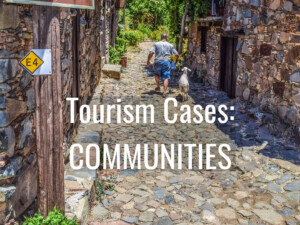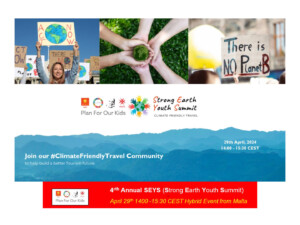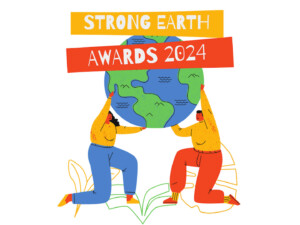CABI Tourism Cases: Animals and tourism
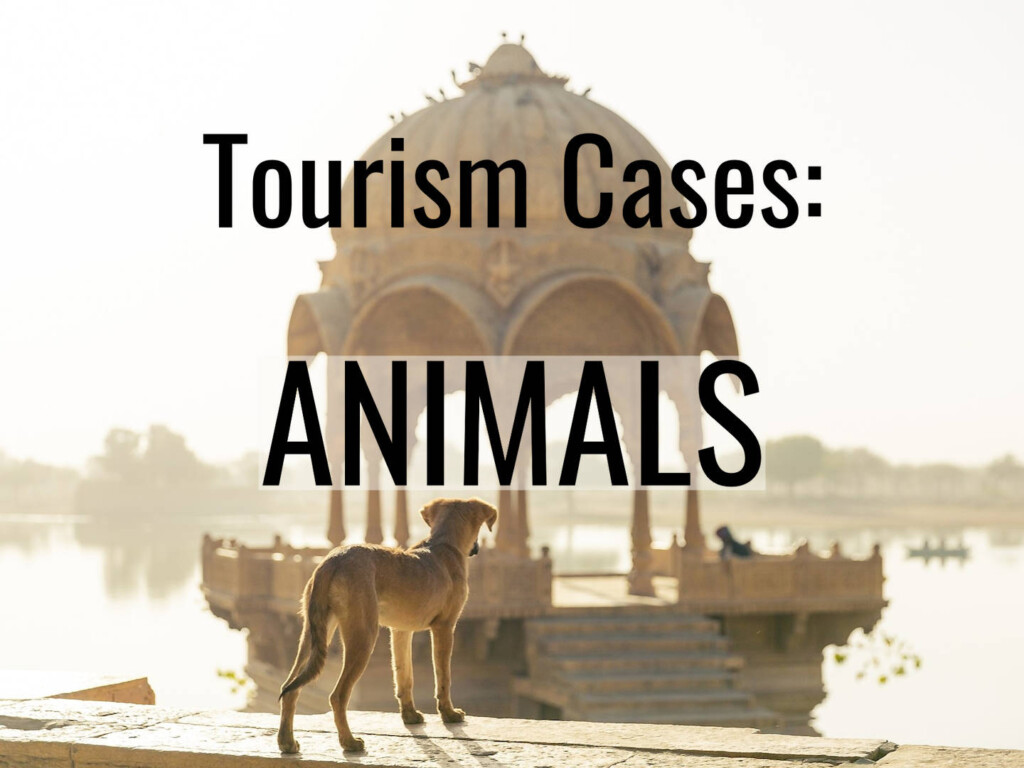
CABI Tourism Cases, a “Good Tourism” Partner, publishes peer-reviewed case studies on travel & tourism’s interactions with the world from just about every angle … including (non-human) animals and tourism.
This is the first in a new series of posts in which CABI shares brief summaries of its most recent tourism-related case studies and books along various themes.
[The first case study listed is free to access in full for a limited time.]
Contents
CABI Tourism Cases on animals and tourism from 2023
‘The Bioluminescent Insects of Grandfather Mountain Stewardship Foundation’
Written by managers from Grandfather Mountain Stewardship Foundation, a not-for-profit natural park located in Linville, North Carolina, and a researcher specialising in entomotourism, a specialised form of wildlife tourism, this case study outlines how a wildlife viewing strategy for bioluminescent insects (e.g. fireflies, glow-worms) was developed and implemented in the summer of 2022.
‘Land-Use Conflicts and an Alternative Wildlife Management Option for the Loliondo Game-controlled Area, Tanzania: Insights from a Community Survey’
This tourism case study pays attention to natural resource management conflicts surrounding the Loliondo Game-controlled Area which encompasses 4,000 sq km adjacent to Serengeti National Park and Ngorongoro Conservation Area in Tanzania.
Maasai, the largest nomadic pastoralist ethnic group in Tanzania, accounts for the overwhelming majority of the population residing in the Loliondo Game-controlled Area. The Loliondo Game-controlled Area has suffered from land-use and property-right conflicts among stakeholders despite establishing a series of wildlife management policies concerning the area.
Trophy-hunting tourism has been operated in the Loliondo Game-controlled Area by a transnational private corporation with the Tanzanian government’s exclusive permission. Trophy hunting conflicts with other land uses in the Loliondo Game-controlled Area, including non-consumptive tourism, pastoral livelihoods, and crop farming.
‘Bird Watching Tourism in Sustainable and Accessible Destinations: The Case of the Entrepreneurial Venture Explora Caloccita in the Mexican Pacific Coast’
Bird watching is an activity that may prompt sustainable tourism development in remote communities. This case study lays out some lessons learned from Explora Caloccita, a young venture offering bird watching to tourists on Mexico’s Pacific coast.
This case is based on descriptive research, laying out the practitioners’ insights and analysing the supply of experiences related to bird watching. The innovative vision of the entrepreneurs, the financial and logistical backing by the local hotel La Quinta, and the support of residents and local tour operators allow for the conclusion that bird-watching tourism has been, in this particular case, a sustainable economic alternative.
‘Animal Rescue Tourism: Supporting the Welfare and Rights of Domesticated Street Animals in the Age of Social Media’
This case focuses on domesticated animals in tourism and explores how animal rescue organisations can engage voluntourism to promote animal welfare and rights in the digital age. A key issue addressed is how social media can be both harmful and beneficial for animals in tourism.
The case shows how an animal rescue organisation in India has leveraged social media to heighten awareness and engagement in animal welfare and rights through tourism. Rather than partake in harmful wildlife selfies or unwittingly support cruel industry practices, voluntourists actively help to rescue and rehabilitate injured and ill street animals and further promote the cause by sharing their experiences online.
CABI Tourism Cases on animals and tourism from 2022
‘Creating Community Conservation Areas and Sustainable Livelihood Options at Nkwichi Lodge, Lake Malawi, Mozambique’
Nkwichi is a 14-bed lodge located on the shores of Lake Malawi. The lodge has collaborated with 16 communities to establish the 120,000 hectare Manda Wilderness Community Conservation Area of Mozambique. The lodge supports 40 permanent local employees, and represents the only formal employment available in the area. Nkwichi has facilitated a halt to hunting in the reserve, sustainable agriculture initiatives, and the application of solar power for electricity.
‘“The red panda is a raccoon”: Consuming fantasy and imagination in wildlife tourism’
Based on a case study of interactions between red pandas and tourists at Chengdu Research Base of Giant Panda Breeding, this case analyzes the consumption of fantasy and imagination in wildlife tourism.
The red panda, a rare and attractive animal native to southwestern China, is relatively unfamiliar to Chinese tourists, who frequently mistake it for a raccoon, a North American native. This fanciful and imaginative consumption of the red panda is assessed through its relevance to the construction of tourist identities and societal relations.
‘Combatting Climate Change, Supporting Biodiversity Conservation and Benefitting Local People at Mombo, Okavango Delta, Botswana’
Mombo Camp is located on Chief’s Island in the Moremi Game Reserve within the Okavango Delta of Botswana. This case study explains how the camp has dramatically reduced its carbon emissions by converting its power from diesel generators to 100% solar energy, and made substantial contributions to black and white rhino re-introductions in the country. Through its lease fees, employment, and procurement, the lodge has also made substantial contributions to the local and national economy during the course of its concession period.
Recent CABI books on animals and tourism
‘The elephant tourism business’
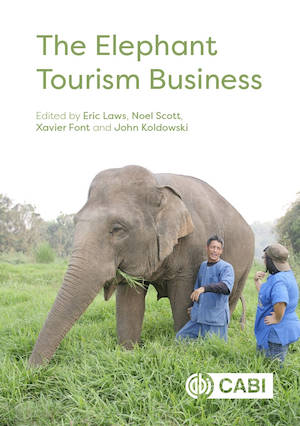
Elephant tourism is a growing activity in many countries across Asia and Africa and is popular with tourists from all parts of the world. Elephant tourism has grown rapidly, providing the only viable way for elephants and their owners to survive since the banning of logging. Old logging camps have been developed into sanctuaries for some elephants, but many other camps were established as entertainment centres, resulting in serious welfare issues for the elephants and their mahouts. The profits from elephant tourism in Asia have encouraged African operators to follow a similar business model.
Edited by Eric Laws, Noel Scott, Xavier Font, and John Koldowski, this book draws attention to the need for a comprehensive and rigorous focus on local solutions to improve the welfare of captive elephants, their mahouts and local residents, and to enhance tourists’ experiences of elephant tourism.
‘Tourism, Heritage and Commodification of Non-human Animals: A Posthumanist Reflection’
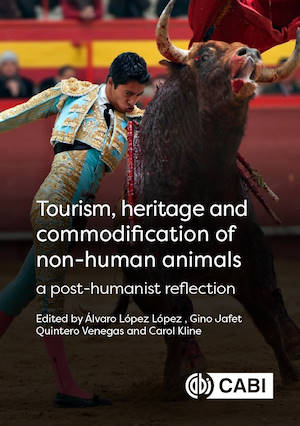
Heritage is a social construction rooted in modern and contemporary societies. It is commonly a positive assessment of many elements of the physical and human environment (e.g. ecosystems and landscapes, monuments, customs, gender norms, religious practices, gastronomy, and livelihoods). Heritage and tourism are strongly related to each other in that heritage gives rise to tourist attractions and activities, and tourism enhances the designation of heritage sites.
Edited by Álvaro López-López, Gino Jafet Quintero Venegas, and Carol Kline, this book contains chapters that reveal both the unethical interactions between humans and animals within heritage tourism, and those that show experiences in which efforts are made to minimise damage.
About CABI Tourism Cases
Tourism Cases is a growing collection of high-quality case studies that explore and inform the development of sustainable tourism. The case studies bring together research, experiences and expertise from tourism studies and programmes around the world.
All users can search, browse and read summaries of case studies. Full text access is available via individual or institutional subscription, or by purchasing a single case study.
Featured image (top of post)
Somewhere in India. Image by vkhima (CC0) via Pixabay. “GT” added the words ‘Tourism cases: ANIMALS’.
Don’t miss other “GT” content tagged ‘Wildlife and other animals’



